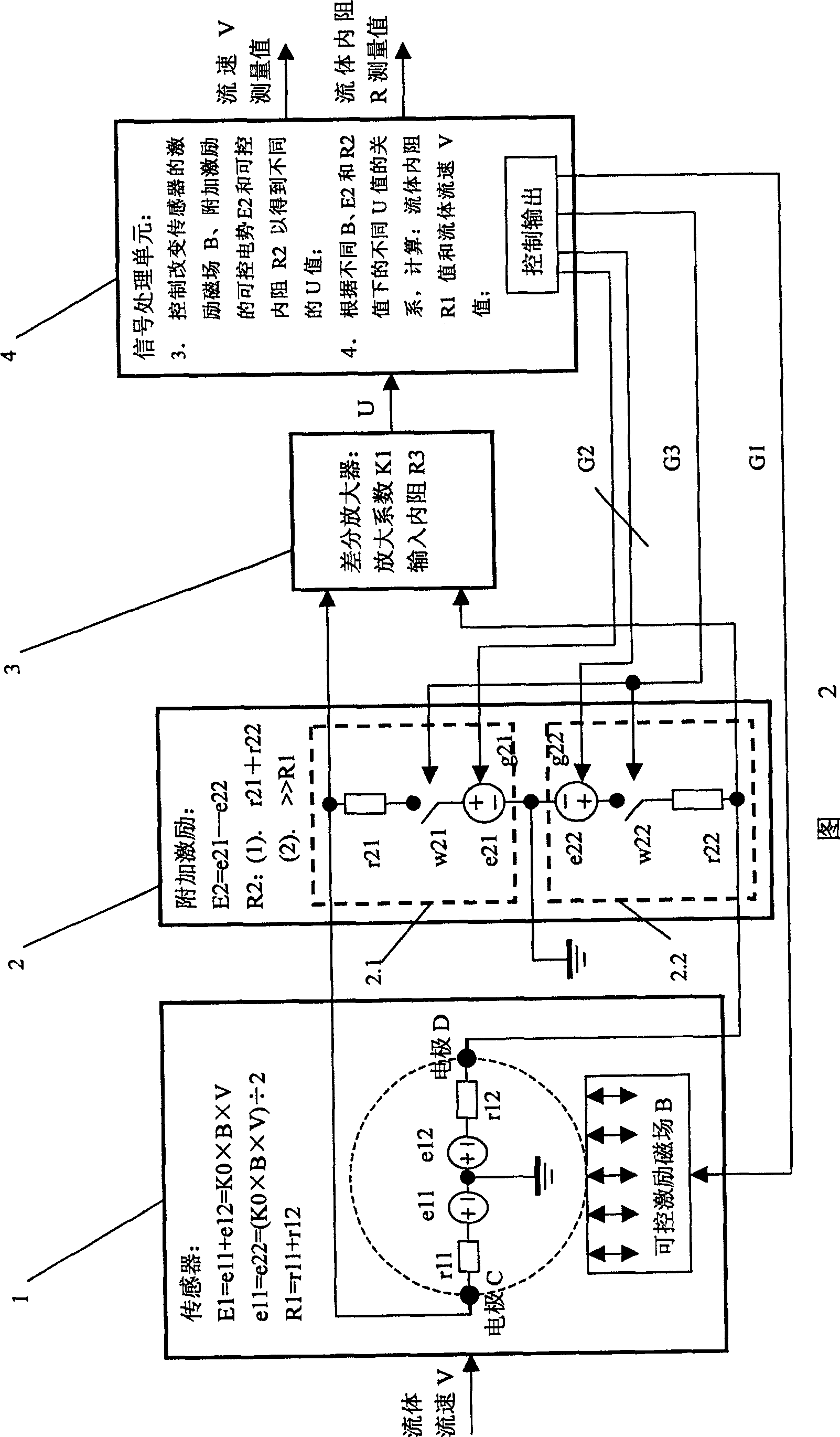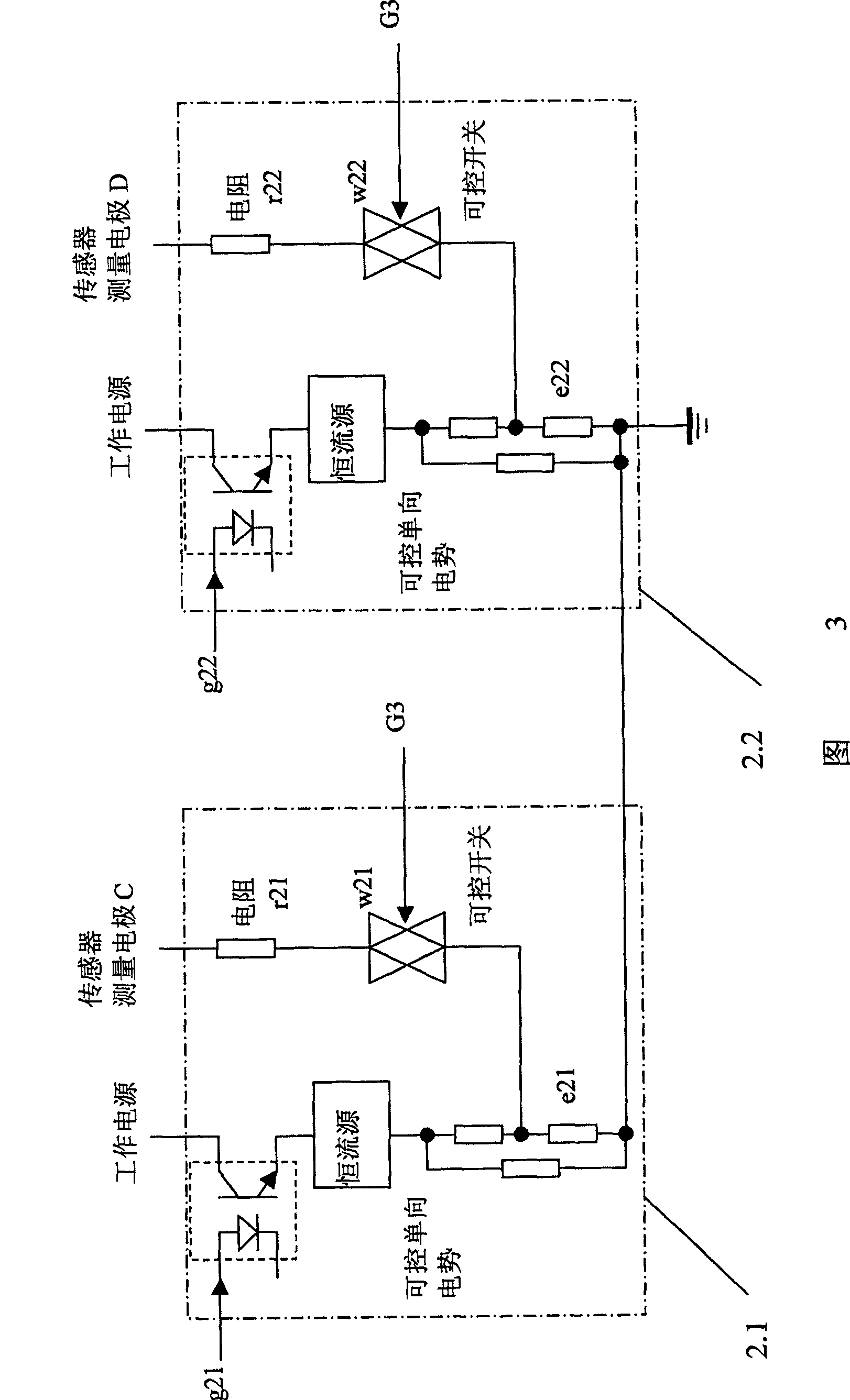Parallel type electromagnetic flowmeter with dual excitations
An electromagnetic flowmeter, dual excitation technology, applied in the application of electromagnetic flowmeter to detect fluid flow, volume/mass flow generated by electromagnetic effect, etc., can solve the problem that there is no ideal method for quantitative dynamic monitoring of fluid conductivity or internal resistance, etc. question
- Summary
- Abstract
- Description
- Claims
- Application Information
AI Technical Summary
Problems solved by technology
Method used
Image
Examples
Embodiment 1
[0068] Embodiment 1: Referring to Fig. 1, this parallel double excitation electromagnetic flowmeter includes a sensor 1 having an excitation magnetic field B to form a fluid cutting magnetic force line to generate an induced potential, a differential amplifier 3 having an input internal resistance R3 and a signal amplification factor K1 and A signal processing unit 4, the sensor 1 has two measuring electrodes C and D for the fluid, the two measuring electrodes C and D are connected to the input of the differential amplifier 3, and the output U of the differential amplifier 3 is connected to the signal processing unit 4; the fluid The electrical conductivity makes two electrodes C and D have fluid internal resistance R1, and the electrodes C and D of sensor 1 have induced potential E1=K0×B×V under the fluid velocity V, K0 is the coefficient of sensor (1); It is characterized in that An additional excitation 2 is connected in parallel at both ends of the electrodes C and D of the...
Embodiment 2
[0089] Embodiment 2: This embodiment is basically the same as the above embodiment, the difference is: see Figure 4 and Figure 5, the above additional excitation 2 is composed of equivalent internal resistance R2 and controllable potential E2 connected in series, corresponding to the difference The output U of amplifier 3 has:
[0090] U = K 1 × E 1 × R 50 R 1 + R 50 + E 2 × R 40 R 2 + R 40 , in R 40 = R 1 × R ...
Embodiment 3
[0105] Embodiment 3: This embodiment is basically the same as Embodiment 1, the difference is: referring to Fig. 6 and Fig. 7, the above-mentioned additional excitation 2 is only composed of controllable internal resistance R2, corresponding to the output U of the differential amplifier 3:
[0106] U = K 1 × E 1 × R 50 R 1 + R 50 , in R 50 = R 2 × R 3 R 2 + R 3 ;
[0107]The signal processing unit 4 has a control output G3 to control the controllable internal resistance R2 of the addition...
PUM
 Login to View More
Login to View More Abstract
Description
Claims
Application Information
 Login to View More
Login to View More - R&D
- Intellectual Property
- Life Sciences
- Materials
- Tech Scout
- Unparalleled Data Quality
- Higher Quality Content
- 60% Fewer Hallucinations
Browse by: Latest US Patents, China's latest patents, Technical Efficacy Thesaurus, Application Domain, Technology Topic, Popular Technical Reports.
© 2025 PatSnap. All rights reserved.Legal|Privacy policy|Modern Slavery Act Transparency Statement|Sitemap|About US| Contact US: help@patsnap.com



